While Walt Disney may have thought they were the way of the future, monorails have failed to become a widespread mode of transportation. Like stream trains, after the Disneyland monorail opened there was a building boom of theme park monorails in the 1960s and 1970s. Yet now there are more amusement parks that fall on the “used to have a monorail” list versus the “still operating” one.
Let’s take a ride through memory lane and revisit amusement parks who once had a monorail.
Cedar Point Monorail (1959-1965)
The monorail at Cedar Point, relocated from Akron’s Summit Beach Park, opened in 1959. The installation and infrastructure cost were $125,000. The twenty-foot-high track was laid out in and L shape out-and-back configuration. X-shape supports held up the outgoing portion on one side and the opposite direction of travel on the other. The two four-car trains were gasoline powered.
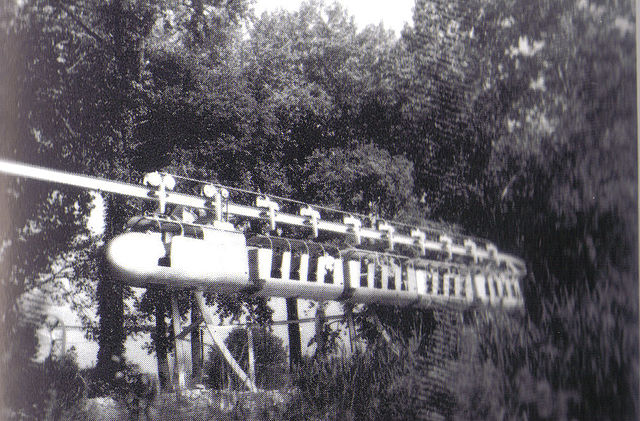
https://upload.wikimedia.org/wikipedia/commons/thumb/d/d2/Cedar_Point_Monorail_ride.jpg/640px-Cedar_Point_Monorail_ride.jpg
The monorail was the most popular ride at Cedar Point until the Blue Streak roller coaster and Mill Race Log flume opened. The suspended monorail was said to have produced more income than any other ride at Cedar Point in 1959, and recorded 13,000 passengers in a single day. It had to have been most impressive as the majority of guests had never seen anything like it at the time. Cedar Point’s monorail closed and was removed from the park in 1965.
Skyrail – Busch Gardens California (1966 – 1979)
A series of beer gardens and amusement parks built by the Anheuser-Busch family resulted in three monorails that are sadly all defunct. Besides the well-known locations in Tampa and Williamsburg, there used to be another Busch park located outside of Van Nuys, Los Angeles California. The suspended monorail, called the Skyrail and built by Arrow Dynamics, traveled through a brewhouse before passengers exited into the 17.5-acre theme park. The two-car trains were very boxy in appearance but they allowed guests a peek inside the brewing and packaging process. The Busch Gardens California park and monorail closed on Valentine’s Day 1979 for expansion of the brewery. A few of the Skyrail’s supports still exist having been repurposed to support brewery piping.
Eagle One – Busch Gardens Williamsburg (1975 – 1998)
Anheuser-Busch opened another brewery, this time in Williamsburg, Virginia, in 1972. A hospitality center was opened in 1974 and in 1975 one of the two remaining Busch Gardens opened. A monorail was built to take guests from the theme park over to the hospitality center in order to tour the brewery (along with free beer tasting). Unlike the other Busch parks, Eagle One’s vehicles sat on top of the track rather than suspended below it. The Eagle One monorail was closed in 1998 due to cost and the track and supports were removed in 1998 and 1999.
Trans-Veldt Monorail – Busch Gardens Tampa (1966 – 1999)
The most famous and longest lasting monorail at any of the Busch Gardens parks opened in Tampa in 1966. The suspended monorail system used boxy trains with onboard engines to produce the AC power necessary for the electric motors. In 1987, the monorail closed for a complete overhaul. Intamin built six new trains. Bus bars were added to the overhead track for power instead of an onboard system. The tinting of the windows was increased to help keep the interior cool. The Trans-Veldt Monorail re-opened in February of 1988. The 1.5-mile journey around the Serengeti plains took ten to twelve minutes at a blistering six miles per hour.

The monorail eventually shutdown in 1999 due to upkeep cost. Kennywood amusement park in West Mifflin, Pennsylvania purchased the monorail in 2000 or 2001. It was rumored the park planned to install the monorail to move guests from the hillside parking lot, across a busy street, and into the amusement park but those plans never materialized. At that time, Kennywood also owned Sand Castle water park, Idlewild Park, and Lake Compounce, so the monorail could have ended up being used at any of those properties as well. Current status is unknown, but most likely will never operate again.
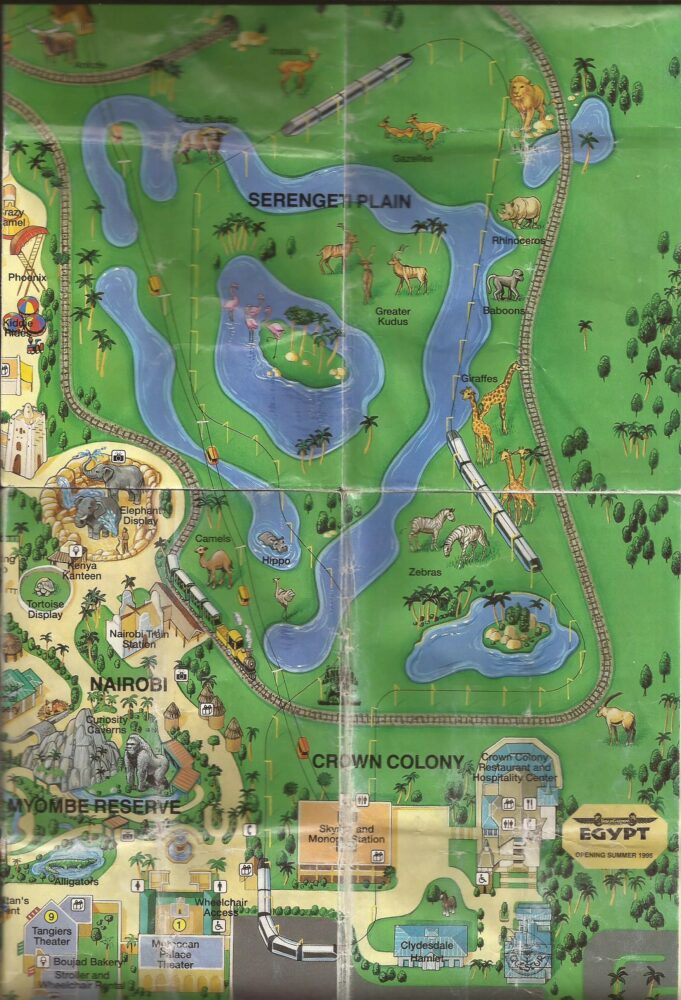
Fun Pier/Wildwoods by the Sea Monorail (1960s to 1970s)
Not much is known about this monorail from Wildwoods, New Jersey other than it was a Universal Design Limited straddle model with a four-car train that opened in the mid-1960s. The red, white, and blue colored vehicles traveled out over the beach within feet of the Atlantic Ocean. Fun Pier was sold in 1976 and the new owner thought the monorail was too low, going right on the roof of the game’s buildings. He wanted to build more elaborate structures to house the games so the monorail was removed.
Ocean Playland Park Monorail (1965 – 1981)
A monorail by Universal Design opened at Ocean Playland Park (later just Playland Park) in Ocean City, Maryland on June 18, 1965 for their inaugural season and ran until 1981. The excursion monorail had a single station and encircled the small park, which was only 860 feet long by 375 feet wide. The straddle monorail vehicles were sold to Geauga Lake since they had their own Universal Design monorail.
Carowinds Monorail (1973 – 1994)
Carowinds, a theme park straddling the North and South Carolina border just outside of Charlotte, opened an excursion monorail attraction on June 2, 1973. The inaugural ride included the governors of North and South Carolina. It cost seventy-five cents to ride in 1973 but was added to the general admission ticket in 1974. The single station was located in the Contemporary Carolinas section and shared the same building as the Speedway attraction. Built by Universal Mobility Incorporated (UMI), the ride took around ten minutes to navigate the two-mile course, traveling at a max speed of 18 miles per hour. At a cost of $3 million dollars, it was the longest monorail UMI had built at that time (soon to be surpassed by their following monorails). There were four trains composed of eight cars each which resulted in a theoretical hourly capacity of 2,200 people per hour.
Initially, the monorail was planned to connect to a hotel that was never built (though there is a new SpringHill Suites hotel on Coasterview Drive just outside the park now). After years of declining ridership, the monorail was closed in August of 1994. It was supposedly relocated to the Vidafel Mayan Palace Resort in Acapulco, but never operated and is unclear if it was ever even reassembled or remained in storage.
Bellaire Express (1969 – 2006)
Geauga Lake went through a whole parade of owners and name changes, from Geauga Lake to Six Flags Ohio to Six Flags Worlds of Adventure back to Geauga Lake. The Bellaire Express monorail survived them all and operated for 38 years. The Parkview Express, as it was originally called, was renamed Bellaire Express in 2000 when the track was rerouted around a new wave pool added as part of the Hurricane Harbor expansion.
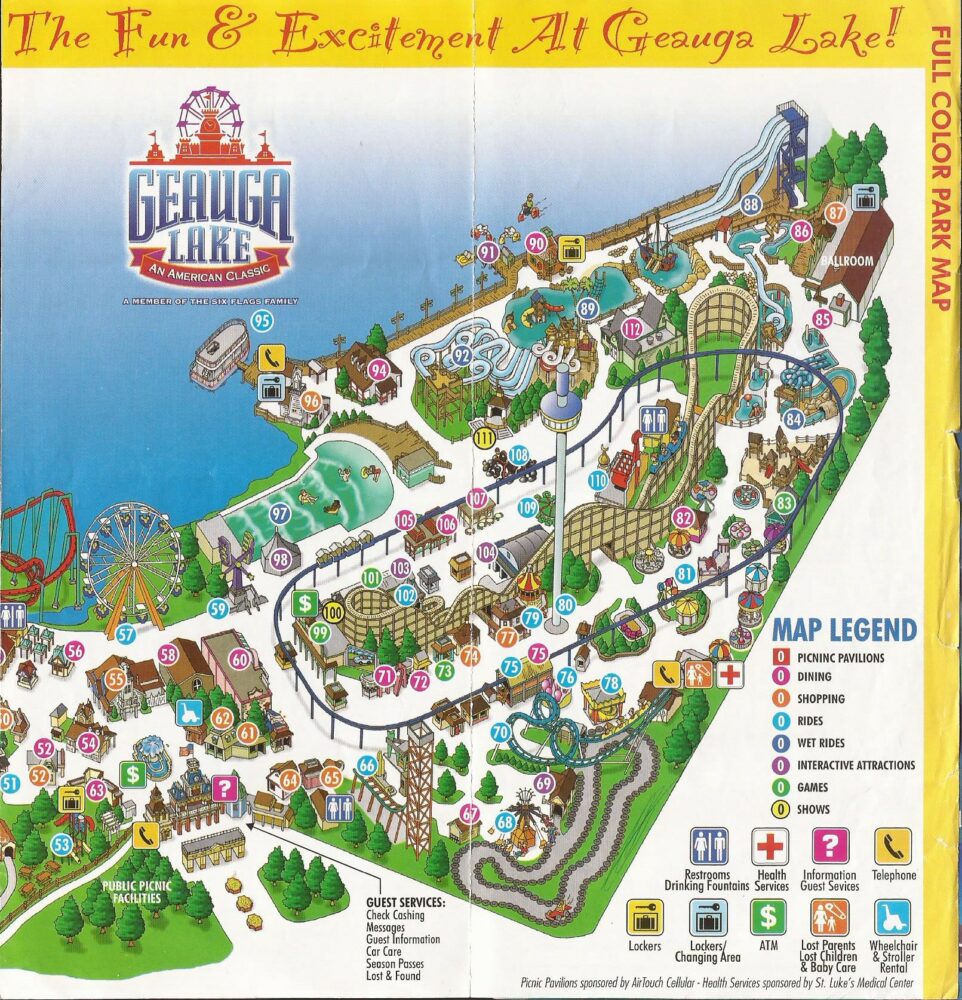
The Universal Design Limited monorail ride gave good views of the park but many guests complained it was too slow, especially during the second half of the course when it had to navigate some tight turns. The monorail would have really benefited from being extended and adding a station on the other side of the lake, transforming it from excursion to transportation. Instead, visitors had to walk a long way around the park’s namesake lake.
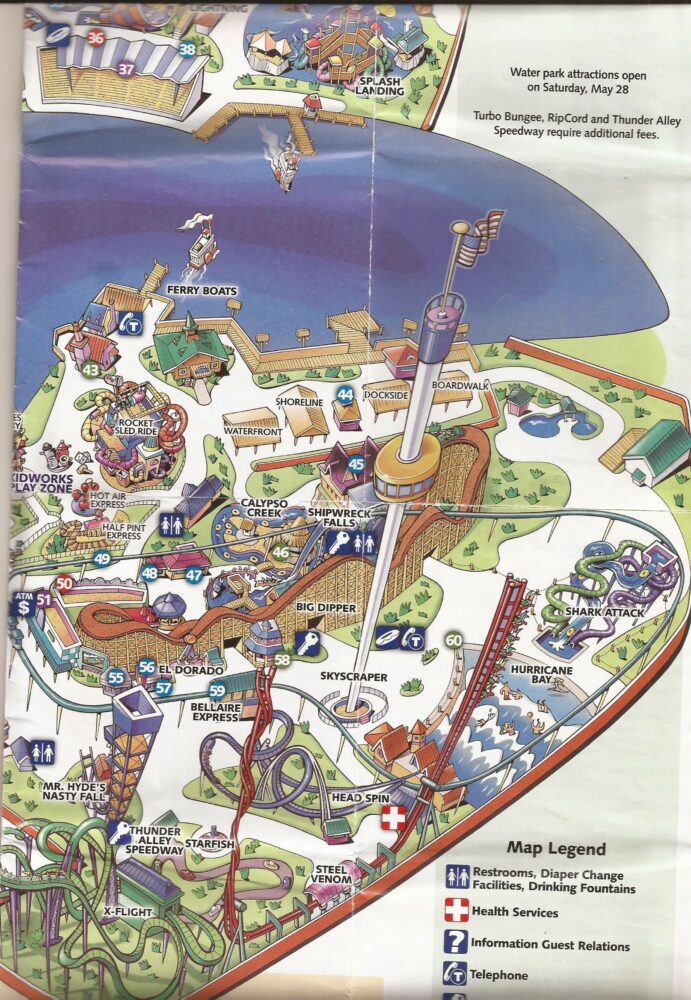
Notice the difference in the track layouts?
The monorail was removed after the 2006 season and scrapped. The 2007 season ended up being the last for the ride side of the park. The remaining water park (on the former Sea World property) was permanently shuttered in 2016.
Kings Island Monorail (1974-1993)
While the main draw of Kings Island today is the heart-pounding roller coasters like Orion, Mystic Timbers, and Banshee, it wasn’t always this way. The largest addition to Kings Island of Mason, Ohio in terms of acreage was the 100-acre Lion Country Safari. Originally planned on being a drive thru, the park planners decided on using a monorail due to the hilly topography.
Ironically, calling it a monorail is a bit deceiving. The track was actually composed of two steel rails placed closely together. Electric train might have been a more accurate way to describe it. The track stayed mostly at ground level too. It was quite the challenge to install and maintain the sensitive electrical connections within the rail to power the monorail and resulted in a lot of headache and down time.
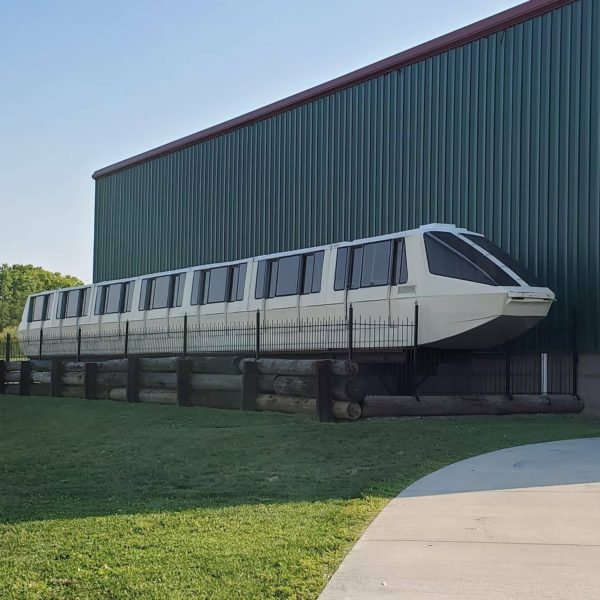
The monorail safari opened in 1974 and up to 22,000 guests per day were carried in one of seven trains composed of nine cars through expansive animal enclosures. The layout was designed so that no animals were more than 125 feet from the track. This UMT Tourister monorail system had a slower speed than other similar systems so guests could view the animals.
In 1976, the monorail became the first attraction to require an additional fee (50 cents) at the park and was called Lion Country Safari (managed by a third party, Lion Country Safari Inc) later renamed Wild Animal Safari in 1977 after the contract with Lion Country Safari ended and again to Wild Animal Habitat.
More than 15 million guests rode the two-mile-long monorail in its twenty years of operation. Dwindling riders, expense to operate it, and the amount of land it took up all led to the attraction’s closure in 1993. Some of the animals were donated to The Wilds in Zanesville, Ohio. When Paramount took ownership of the park there was some debate into turning the former safari into the “Movierail”, a tour through movie sets and vignettes that never happened. The monorail trains sat at Kings Island until 1998, when they were purchased by a local business for $1.
Wild Animal Safari Monorail (1975 – 1993)
Being a sister park of Kings Island, it was no surprise that Kings Dominion of Doswell, Virginia would get their own monorail. Constructed in the fall of 1974, the two-mile long monorail opened in 1975. This monorail was also constructed low to the ground around animal enclosures. The nine-car trains took about twenty minutes to navigate the course. In November 1993, it was announced the safari would be removed and the monorail with it. Unlike Kings Island, the Kings Dominion monorail was scrapped.
Who remembers Wild Animal Safari? When it opened in 1974, guests could drive their car through the safari park. A monorail was added in 1975 to take guests through the exhibit. #KingsDominion #TBT pic.twitter.com/vfpHvvsmp9
— Kings Dominion (@KingsDominionVA) August 24, 2023
Six Flags Magic Mountain Metro (1971-2001)
Six Flags Magic Mountain’s Metro monorail opened in 1971. The Universal Mobility, Inc.’s UNIMOBIL Type II mini-rail system was installed at the Valencia, California theme park at a cost of $1.8 million. There were three stations at various points around the 0.75-mile (1.2 km) course – in the High Sierra Territory, Colossus County Fair, and Samurai Summit regions of the park. The Metro ran six 6-car trains, which meant the ride could theoretically carry 4,682 people per hour – nearly double most other similar monorail systems.
Metro closed in 2001. The ride remained SBNO (standing but not operating) for a decade as it was too expense to deconstruct. In May 2011, three trains and a few pieces of track were sold to Hersheypark who had a similar monorail operating at their park in Hershey, Pennsylvania since 1969.
Bumble Bee Monorail at Santa’s Village (1962 – 1998)
In 1955, a small children’s theme park called Santa’s Village in Skyforest, California opened its gates. They began constructing the 1,000-foot-long Bumble Bee Monorail in 1962. The American Crane and Hoist company used it as a proof-of-concept for the larger scale monorail used at the 1964-65 New York World’s fair (made by AMF). Each of the six cars could hold up to four people and were designed to resemble bumble bees. Even the ticket booth was shaped like a bee hive!
The original incarnation of Santa’s Village closed in 1998. A new owner renovated and reopened the park in 2016 as SkyPark at Santa’s Village. They were advertising a reimagining of the monorail as a new ride called SkyRider where guests could pedal a small bicycle car around the single rail track.
Monorail at Riverside Park (1959 – 1996)
Riverside Park in Agawam, Massachusetts (and now known as Six Flags New England) had a straddle monorail by Universal Design Limited that operated from 1959 to 1996. There was only one train so there was no need for a maintenance spur, train storage, or collision detection systems.
It’s sad to see there are so many defunct steam trains and theme park monorails. Where can you still ride a monorail today? Outside of Walt Disney World and Disneyland, what other amusement parks in America still operate a monorail? Luckily, there are a few surprising amusement parks in the United States that still have a monorail you can ride. Want to read even more about theme park steam trains and monorails? Check this out.
Did you get to ride any of these theme park monorails? Let us know in the comments below!

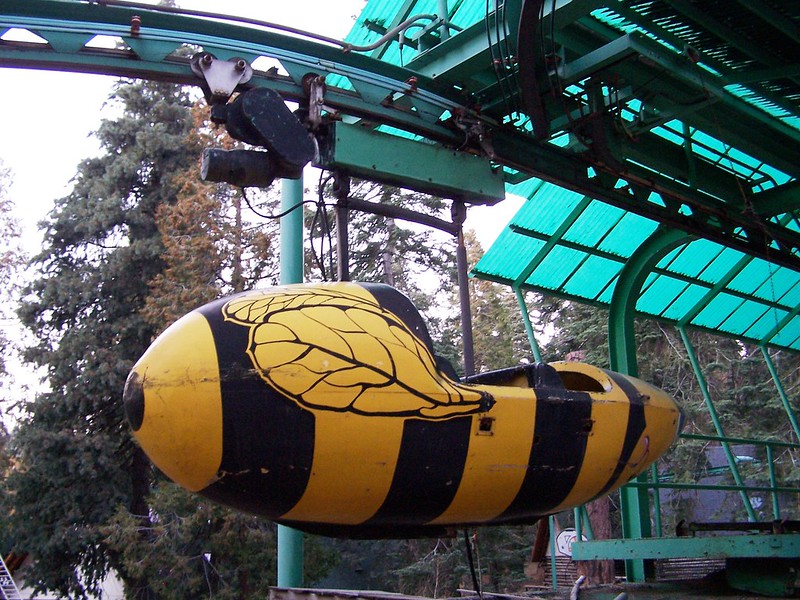
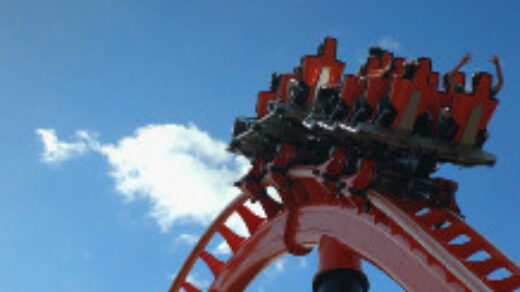
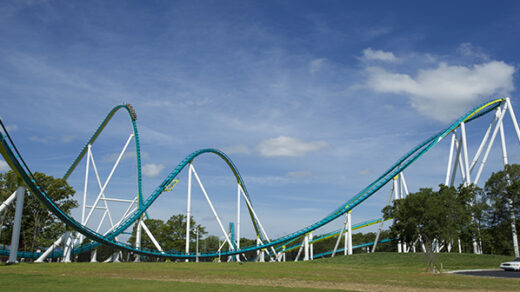
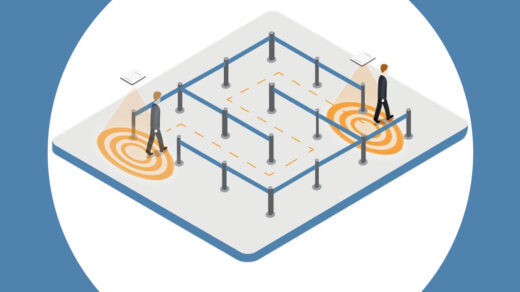




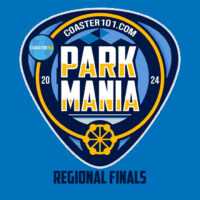
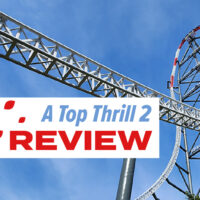
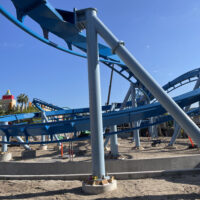




Great article.
Blackpool Pleasure Beach is another one that comes to mind. I’m not sure if any of it’s still there, but they certainly left some of the track up for a while because it also carried some of the park’s electrical lines.
Monorails were always a big deal for me as a kid growing up in south-central Pennsylvania. Eyes glued to the monorail every time my family drove past Dutch Wonderland. Remember explicitly when Hershey built their monorail — with the intent, at the time, or corralling all Hershey visitors’ cars in the lot by the park, then directing them to the monorail, which took them in-town to Chocolate Ave, disembarking mere steps from the famous factory tour. A fairly advanced crow-control idea. It made for an ideal day.
Possibly unrelated:
Rode the suspended monorail that ran over the amusement area at the 1964-1965 New York Worlds Fair. Trains traveled past one going different directions around a loop, not unlike the Disney World monorail at Magic Kingdom. Wonder what became of that.
Monorails appeared at Christmas time in high-end department stores once upon a time. There was a monorail that ran over the main sales floor of what is now Macy’s in downtown Philadelphia. Never had a chance to ride, but I would have loved it.
Not an amusement or theme park, but the Toronto Zoo had an automated train.
https://en.wikipedia.org/wiki/Toronto_Zoo_Domain_Ride
Rainbow Springs in Florida at one point was more or less a theme park and had an open-air monorail. Additionally in Nashville, Tennessee the former Hermitage Landing attractions / campground on Percy Priest Lake (now the Nashville Shores water park) had a monorail almost identical to the one at Rainbow Springs which was only operational for a few brief years in the early 1980s.